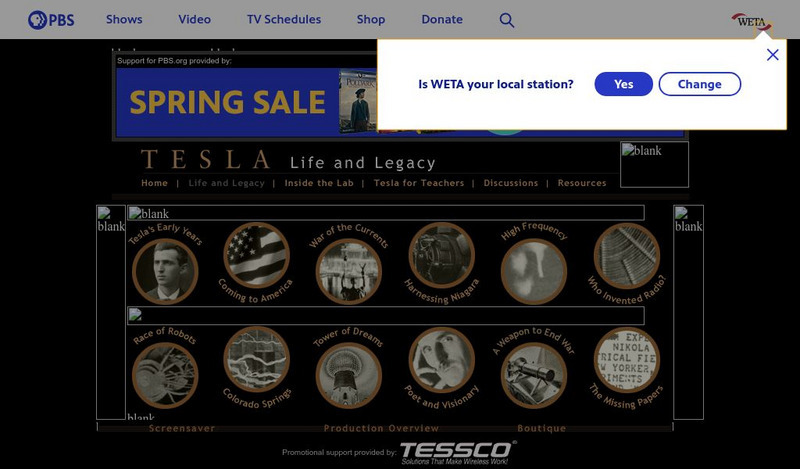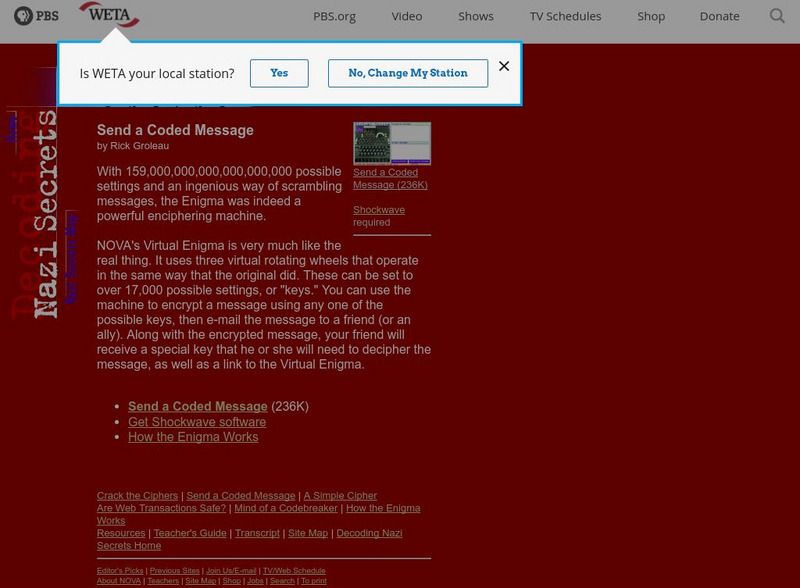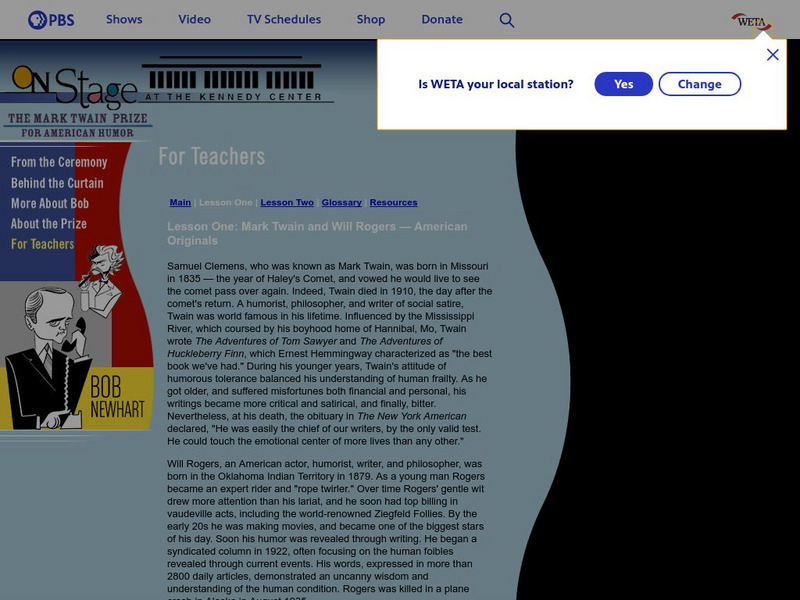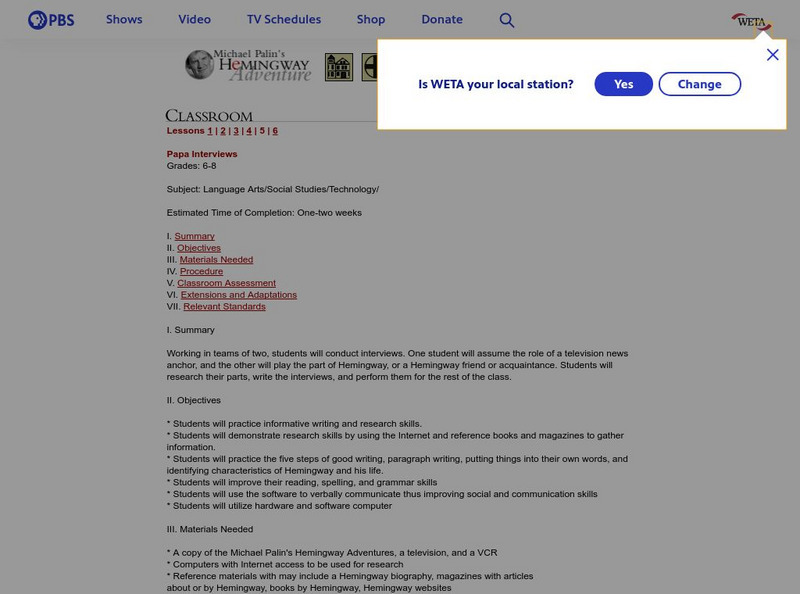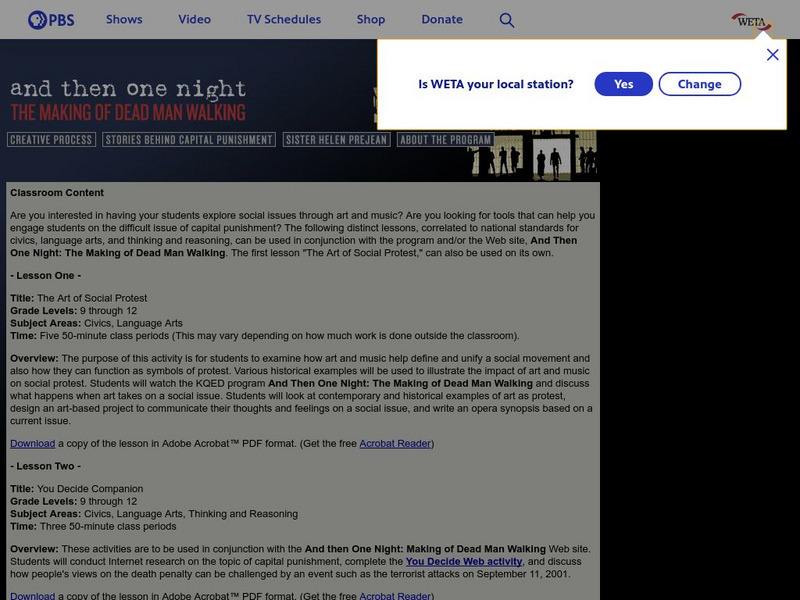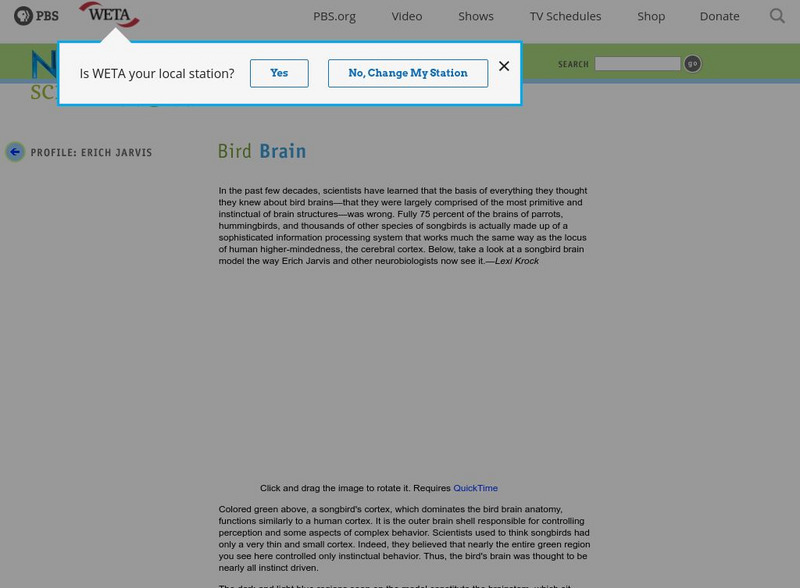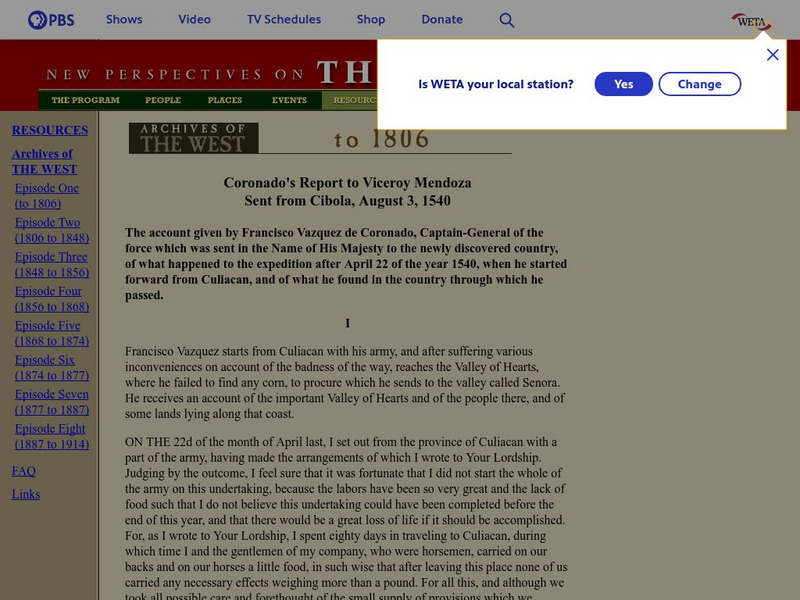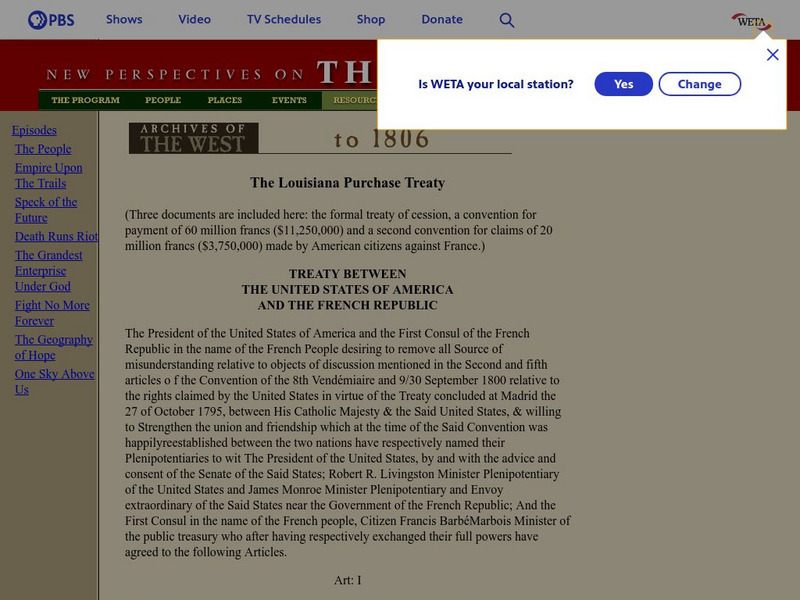PBS
Pbs: Global Connections, the Middle East
View a timeline of Middle Eastern history, explore events through themes, and make connections through the use of big-picture questions such as "What's the appeal of religious militancy?"
PBS
Kamchatka: Bering Island
PBS television has aired "Kamchatka: Siberia's Forbidden Wilderness" and this website summarizes that film. In it explores Bering Island, which was discovered by Vitus Bering who died there in 1741. It details the week long events of...
PBS
Pbs: Tesla Inside the Lab the Tesla Coil
This is the PBS companion site to a video about Tesla. This particular page reviews Tesla's accomplishments and follows the events of his life that prove to be both tragic and inspiring. This comprehensive resource provides powerful...
PBS
Pbs: Magnetic Storm
The purpose, life, and hazards of the Earth's magnetic field are discussed as they relate to magnetic storms. This includes their impact on animals, auroras, and even compasses. Interactive features are also included in this...
PBS
Pbs Nova: Find Your Longitude
Lost at sea with only your sextant? Use your knowledge of longitude to find your place. The non-shockwave interactive activity makes the concept of longitude concrete.
PBS
The History of Using Sampling Methods
This lesson plan will allow students to understand how the sampling methods used in political polls developed throughout the twentieth century. Approximately five hours in length with materials free and downloadable.
PBS
Pbs: Secrets of the Mind: Probe the Brain
Curious about how our brain works? Canadian Dr. Penfield was the first to map the cortex of the brain. Use this interactive site to recreate the exploration of the brain.
PBS
Pbs: The Story of India: Map of India
PBS explores India through a detailed map of India and its surrounding countries. Provides details on the location of the country. Identifies important waterways, regions within country, major cities, and mountain ranges.
PBS
Pbs Nova: Send a Coded Message Virtual Enigma
Explore the NOVA's Virtual Enigma machine used during WWII. You can send an encrypted message to a friend along with the special key needed to decipher the message. A link is also included to the Virtual Enigma.
PBS
Pbs Nova: Decipher a Coded Message
The basic difference between a code and cipher is explained briefly. You can try to crack a simple cipher at this location.
PBS
Pbs Teachers: Newspaper Reporting and Writing
In this lesson, students explore the many characteristics of a newspaper and try their hands at becoming reporters. They can expand their knowledge about Ernest Hemingway, and author a newspaper focusing on his life, especially his...
PBS
Pbs Teachers: On Stage at the Kennedy Center: 2001 Mark Twain Prize: Twain and R
Use this lesson to study the lives of Mark Twain and Will Rogers. Analyze the writing styles of both authors, and identify the men as humorists who reflected and changed American culture.
PBS
Pbs Teachers: Papa Interviews
Through this lesson, middle schoolers can examine the life and interests of Ernest Hemingway. They will research, write and perform a mock interview between Hemingway and a TV news anchor. Although this lesson was created to be used with...
PBS
Pbs Teachers:engineer a Crop
Compare the traditional method of selective breeding with transgenic methods. Interactive activities on this site include breeding the largest ear of corn possible and engineering a "super crop".
PBS
Pbs Teachers: Odyssey of Life: Creepy Crawlies
Identify places in a typical room where "creepy crawlies" like dust mites, ants, lice and silverfish might live. Then check out places on the human body that dust mites may inhabit, and learn about the disease and other problems dust...
PBS
Pbs Teachers: Surviving Aids: Fighting Back (Hot Science)
Explore the body's immune system to understand how a virus enters the body and how the human body fights against the viruses like the mumps virus and HIV.
PBS
Pbs Teachers: Making Vaccines
Examine how vaccines generate immune responses against pathogens in the body by creating six vaccines in this virtual laboratory.
PBS
Pbs Teachers: Is Love in Our Dna?
Participate in an online poll to discover what features instinctively guide people when choosing a mate. Consider which traits, both physical and social, are "universally" considered attractive to potential mates, and why.
PBS
Pbs Teachers: The Making of Dead Man Walking (Classroom Content)
Go directly to two lesson plans developed by the producers of the PBS documentary "The Making of Dead Man Walking" about an opera based on the work of Helen Prejean. Use the lessons to help students examine how art and music can define...
PBS
Pbs: Bird Brains
PBS offers a look into the brains of birds. Examine each part of the brain and its function. Click an drag the brain to see a 3-D view.
PBS
New Perspectives on the West: Coronado's Report to Viceroy Mendoza
This is the original report Coronado sent to the viceroy describing his journey from Mexico to what he hoped were the Seven Cities of Gold. He describes the land, people, climate, food, animals.
PBS
Pbs: New Perspectives on the West: Journey of Alvar Nunez Cabeza De Vaca
Read the incredible story of Cabeza de Vaca in his own words. He tells of his many years-long journey across the South, and writes as an ethnologist about the Native Americans he encounters. A fascinating account!
PBS
Pbs: The West: The Louisiana Purchase Treaty
This site from PBS contains a transcription of the three documents concerning the purchase of Louisiana from France. There is a link to other documents.
PBS
Pbs: The War: Daniel Inouye
At the online companion site of the PBS documentary series "THE WAR," read the biography of a Japanese American soldier, Daniel Inouye, who served during WWII, and became a U.S. Senator from Hawaii. With links to related resources,...




